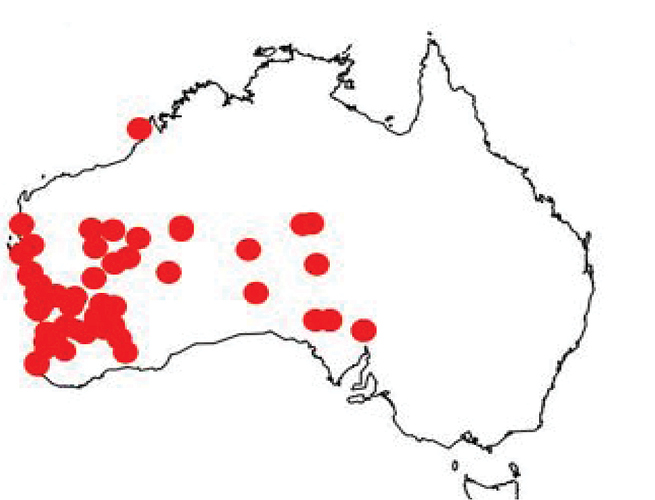[snip]
The new species belong to the subgenus Colletellus in the genus Leioproctus in the family Colletidae – the group of the silk bees. The bees in this family cover the inside of their nest with self-produced silk to protect their offspring
Previously, the subgenus Colletellus was considered to contain a single species only. This finding demonstrates that a wealth of native bees remain to be discovered Australia.
Lead author Remko Leijs from SA Museum, said that the discovery highlights the importance of entomological collections as a repository for as yet undescribed species.
“By comparing the species, we caught to specimens in entomological collections, we discovered 20 additional undescribed species, hidden in the collections,” Dr Leijs said.
With about 1650 known species in Australia, it is likely that a lot of native bee species remain to be discovered.
The study also underscores the fact that the Australian bee fauna, and especially that of the interior, remains as yet poorly understood…
[/snip]
From the article linked below, the distribution map for the new species:
[snip]
The monotypic subgenus Leioproctus (Colletellus) was established by Michener (1965) for L. velutinellus , an unusual species of Australian neopasiphaeine bee with two submarginal cells and ciliate, rather than pectinate, inner hind tibial spurs. Formerly Leioproctus was classified under the Colletinae (Michener 2007), but recent phylogenetic analyses of the world’s Colletidae indicated its position under Neopasiphaeinae(Almeida et al. 2011). Now, more than 50 years later, examination of numerous specimens collected by T.F. Houston (WA-Museum) and others, as well as specimens collected on a number of Bush Blitz surveys in remote locations of Australia indicates that L. (Colletellus), is a rather speciose group of bees. The latter surveys are the result of a partnership between the Australian Government, BHP Billiton and Earthwatch Australia to document fauna and flora from selected national reserves. These surveys regularly result in the discovery of new invertebrate species (e.g., true bugs: Symonds and Cassis 2014; spiders: Baehr et al. 2013; bees: Hogendoorn et al. 2015, Leijs and Hogendoorn 2016; review of new described species: Taylor et al. 2017a, b)…
[/snip]
